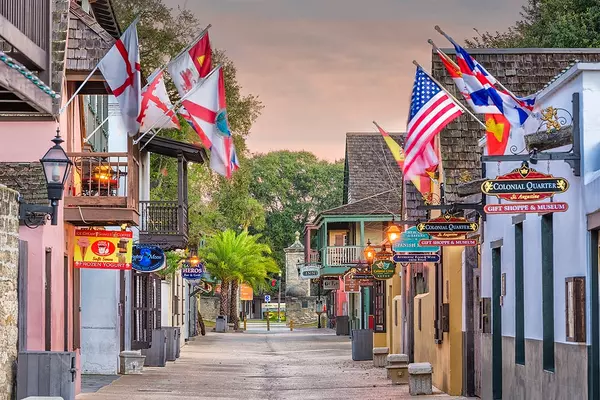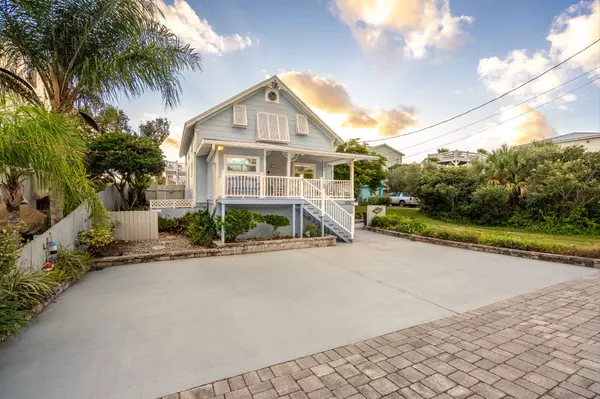Are Tiny Homes the Key to Solving Housing Shortages?
As housing shortages continue to plague many parts of the United States, the question arises: can tiny homes be the solution? Let's explore this growing trend and its potential impact on the housing market.
The Rise of Tiny Homes
Tiny homes have gained popularity in recent years. These compact living spaces typically range from 100 to 400 square feet, and are designed to maximize efficiency and minimize costs. Various factors, including a desire for simpler living, environmental concerns, and economic challenges, have fueled the tiny home movement.
The tiny home market is expected to grow by 4% annually, reflecting increasing interest and adoption nationwide.
Affordability & Accessibility
One of the main advantages of tiny homes is their affordability. With traditional home prices climbing in St. Augustine, FL, tiny homes provide a more accessible entry point into the housing market. The average cost of a tiny home ranges from $30,000 to $60,000, which is much lower than the median home price in St. Johns County (currently at $564,158).
Lower costs can translate into reduced monthly payments and less debt, offering financial freedom. However, the resale value of tiny homes can be unpredictable, which might concern some buyers.
Explore financing options specifically tailored for tiny homes, as some lenders offer specialized loans that could make ownership more attainable.
Environmental Impact
Tiny homes are often praised for their environmental benefits. Their smaller footprint requires fewer resources to build and maintain, aligning with St. Augustine’s commitment to preserving its natural beauty and historic charm.
Energy efficiency can lead to significant utility savings. Many tiny homes use sustainable materials and can incorporate solar panels, composting toilets, and rainwater collection systems. It’s important to remember that the production and disposal of these homes still involve environmental costs.
According to the U.S. Department of Energy, tine homes can reduce energy consumption by up to 45% compared to traditional homes.
Innovative Use of Space
Tiny homes maximize every square inch, using clever storage solutions and multi-functional areas. As St. Augustine has limited land, this innovation could be instrumental in continuing local development.
Built-in furniture, lofted beds, and convertible spaces exemplify the efficient use of space. While this design promotes a minimalist lifestyle, it may not suit everyone, particularly families or those accustomed to larger living areas.
Over-cluttering can compromise the functionality and comfort of a tiny home. Embracing minimalism and regularly decluttering are vital to maintaining a liveable space.
Flexibility & Mobility
Many tiny homes are mobile, built on wheels to offer relocation flexibility. This feature can be particularly appealing in areas where seasonal living is common, like St. Augustine.
Mobility allows homeowners to explore different neighborhoods or relocate without the commitment of a permanent home. On the other hand, frequently moving a tiny home can incur significant costs and logistical challenges.
Before purchasing a mobile tiny home, research local zoning laws and regulations to ensure you can legally place your home on your desired property.
Community & Lifestyle
Tiny home living often fosters a strong sense of community, with many tiny homeowners forming close-knit groups that share resources and support each other. New community groups can enrich St. Augustine's already highly valued community spirit.
Community living can offer social and economic benefits, such as shared gardens and communal space for gatherings, although the close proximity and shared resources might not appeal to everyone.
An American Tiny House Association survey found that 68% of tiny homeowners report improved social relationships and a stronger sense of community.
Challenges to Widespread Adoption
While there are many advantages to consider, there are several challenges to the widespread adoption of tiny homes:
Zoning Regulations: Many municipalities have zoning laws that do not accommodate tiny homes. These regulations often require minimum square footage for residences or do not allow homes on wheels.
Financing: Securing a mortgage for a tiny home can be difficult. Many traditional lenders hesitate to finance tiny homes due to their unconventional nature.
Infrastructure: Tiny homes often require access to utilities like water, electricity, and sewage, which can be challenging to provide, especially for mobile tiny homes.
Addressing these challenges requires collaboration between homeowners, developers, and local governments. Advocating for zoning reforms and innovative financial solutions could support the inclusion of tiny homes in your city’s housing strategy.
Success Stories
There have been successful implementations of tiny home communities across the country. For example:
Cass Community Social Services in Detroit, Michigan, has built a tiny home community to provide affordable housing for low-income residents. This project has not only offered housing, but also created a supportive community.
Community First! Village in Austin, Texas, is another successful example. This community provides affordable, permanent housing for the chronically homeless, combining tiny homes with supportive services to help residents thrive.
These success stories demonstrate the potential of tiny homes to address various housing needs, keeping in mind that scaling such models would require overcoming significant regulatory and logistical hurdles.
Potential for St. Augustine, Florida
For areas like St. Augustine, Florida, tiny homes could offer a viable solution to the housing shortage. Rising housing costs and a need for more affordable options make tiny homes an attractive alternative. However, it would require adjustments to local zoning laws and creative approaches to financing as well as infrastructure.
Conclusion
Tiny homes present an intriguing possibility for addressing housing shortages. While they are not a one-size-fits-all solution, their affordability, sustainability, and flexibility make them a valuable option in the broader strategy to tackle housing challenges. With the proper regulatory and financial support, tiny homes could become a key component in solving the housing crisis across the country.
Categories
Recent Posts











